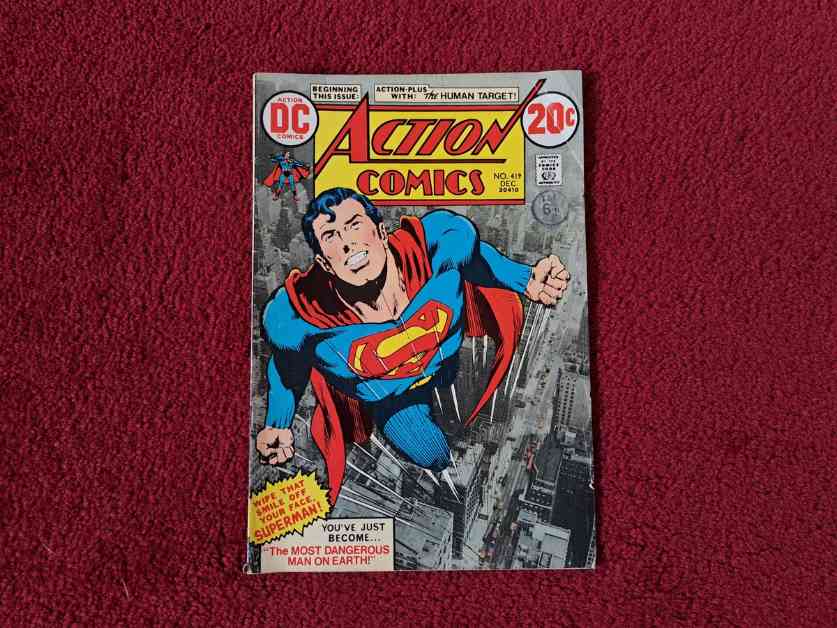Growing up as a Superman fan, I always dreamed of owning a copy of Action Comics No. 419, which was published in 1972. This particular issue featured an iconic cover of Superman flying into the sky, seemingly leaping out of the pages. Earlier this year, I was thrilled to finally find a copy in the secondhand section of my local comic shop. Little did I know that this comic held a significant connection to the history of space science.
Within the pages of Action Comics No. 419, Superman, in his alter ego as reporter Clark Kent, covers the launch of a new NASA satellite while onboard a space shuttle. The comic introduces the Large Space Telescope (LST), which bore a striking resemblance to the real-life Hubble Space Telescope that was launched in 1990. This sparked my curiosity – how did a space telescope that came into existence in 1990 end up in a comic published in 1972?
A clue in the comic’s credits led me to Pete Simmons, the director of space astronomy at Grumman Aerospace Corporation (now Northrop Grumman), who provided technical assistance for the story. A further search revealed a fascinating story behind the creation of the LST, later known as the Hubble Space Telescope.
NASA had been developing plans for a space telescope since the late 1960s, aiming to build an instrument that could peer deeper into the cosmos. Simmons, who had previously worked on the Orbiting Astronomical Observatory 2 (OAO-2), took on the challenge of garnering public and congressional support for the LST project. He recognized the popularity of Superman comics and saw an opportunity to feature the telescope in a story.
Simmons invited DC Comics employees to Grumman labs to showcase models of the LST, convincing them to include the telescope in a Superman comic. Action Comics No. 419 was well-received by readers, providing tangible evidence of public interest in the LST. Simmons even distributed copies of the comic to members of Congress, using it as a tool to demonstrate the telescope’s popularity.
Despite initial skepticism from the scientific community, the LST project eventually secured funding in 1977. Thirteen years later, the Hubble Space Telescope was launched and has since made groundbreaking discoveries in space science. While Superman played a role in raising awareness for the telescope, the true credit goes to individuals like Charles Robert O’Dell and Pete Simmons, who worked tirelessly to make the Hubble Space Telescope a reality.
In the end, the story of Superman’s involvement in launching the Hubble Space Telescope serves as a testament to the power of storytelling and passion in inspiring scientific achievements. The legacy of the Hubble Space Telescope continues to awe and inspire us, reminding us of the incredible discoveries waiting to be made in the vast expanse of the universe.










